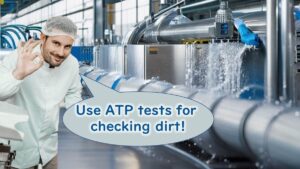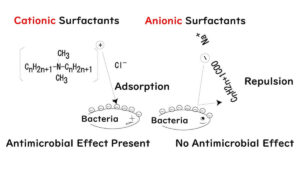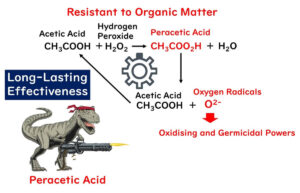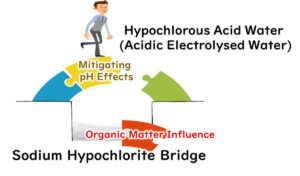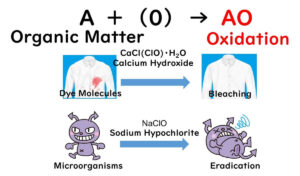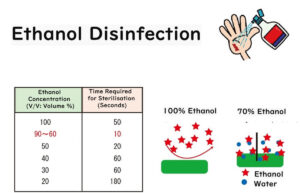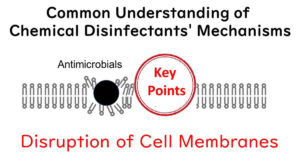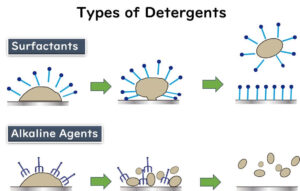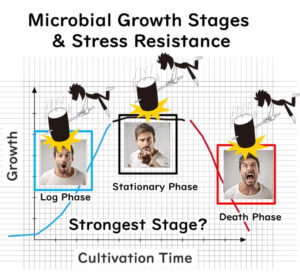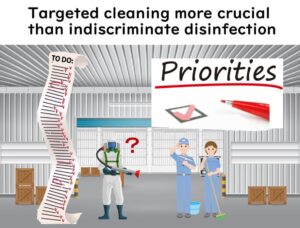Cleaning and Sterilising Food Plants
Understanding the ATP Test: A Simple Guide to Cleanliness Management in Food Factories
Ensuring cleanliness in food factories is essential for product safety. The ATP test provides a quick and effective way to verify cleanliness after cleaning and sterilization, overcoming the time-consuming and complex nature of microbial testing. This article explains the biological significance and chemical structure of ATP, why it is an excellent energy carrier, and the methods and equipment used in ATP testing. By understanding the ATP test and its practical applications, food factories can manage cleanliness more comprehensively and efficiently.
The Food Factory - Quaternary Ammonium Salts (Benzalkonium Chloride)
Let's chat about benzalkonium chloride, a disinfectant often found lurking in the corridors of food factories, standing shoulder to shoulder with sodium hypochlorite as one of the most commonly employed germ-slayers. Benzalkonium chloride is a household name in the world of disinfectants.
Peroxyacetic Acid Formulations as Disinfectants in Food Factories
This article explores the use of peroxyacetic acid formulations as disinfectants in food factories.
Acidic Electrolyzed Water
In this article, we'll dive into a germ-killing agent that overcomes one of the drawbacks of sodium hypochlorite, which was discussed in our previous post. This drawback is its sensitivity to pH levels. The superhero in question? Hypochlorous acid water (acidic electrolyzed water).
Optimizing Sodium Hypochlorite Use in Food Factories: Key Insights and Practical Tips
Explore the essential role of sodium hypochlorite in maintaining cleanliness and safety within food factories. This guide dives into the science behind its effectiveness as a disinfectant, examining its chemical properties, the impact of pH levels, and the influence of organic matter on its germ-fighting power. Learn why sodium hypochlorite is a trusted choice for contamination control in food production, along with best practices to maximize its potential while ensuring safe, clean environments for food handling.
Ethanol Sterilization and Its Mechanism
When it comes to the world of ethanol sterilization, 70% concentration is the star of the show. But why is this particular concentration the MVP of germ-kicking action? Well, it's not like there's a crystal clear playbook on this—there are still some grey areas and "hmm" moments in understanding the exact principles and mechanisms at play. This article aims to shed some light on what we reckon is going on, focusing especially on the efficacy (or lac
Essential Common Understanding of Disinfectant Mechanisms in Food Factories
In the enchanting realm of food factories, where battles against invisible foes are fought daily, understanding the mechanisms of disinfectants is akin to mastering spells in wizardry. As we embark on this mystical journey through the mechanisms of various disinfectants, it's paramount to grasp a fundamental truth, a common thread weaving through the fabric of all disinfectant strategies: the cell membrane.
Discover the Powerful World of Cleaning Agents in the Food Industry: Where grime and germs meet their match
Enter the battleground of the food factory, where grime and germs are the persistent villains, and our mighty cleaning and disinfecting agents stand ready to battle and ensure pristine conditions.
Biofilm in food factories
When considering the cleaning and sterilization of microbes in factories, it's crucial to understand the concept of biofilms. This article simply and clearly explains what biofilms are, their formation process and mechanism, the physiological characteristics of biofilm cells, the areas in food factories where they are likely to form, and methods of removal.
Disinfection vs. Cleaning in Food Safety: Why Thorough Cleaning is the Foundation
To understand the essential strategies of disinfection and cleaning in a food production facility, consider a hypothetical scenario involving Mr. Yamada, a factory worker. Imagine him attempting to disinfect his boots by immersing them in a disinfectant tray at the factory entrance, despite significant food residue on the soles. This situation highlights a critical insight into microbial disinfection: mere disinfection without proper cleaning is ineffective.
